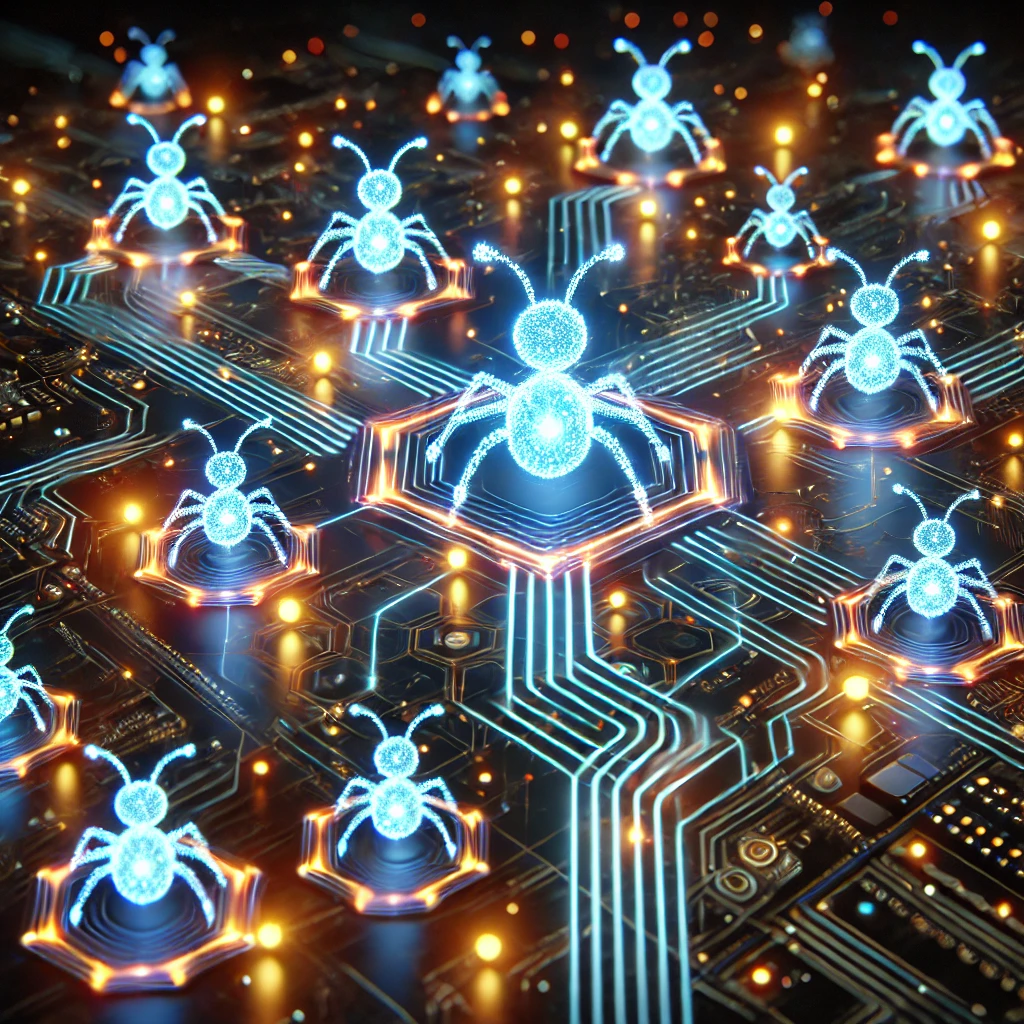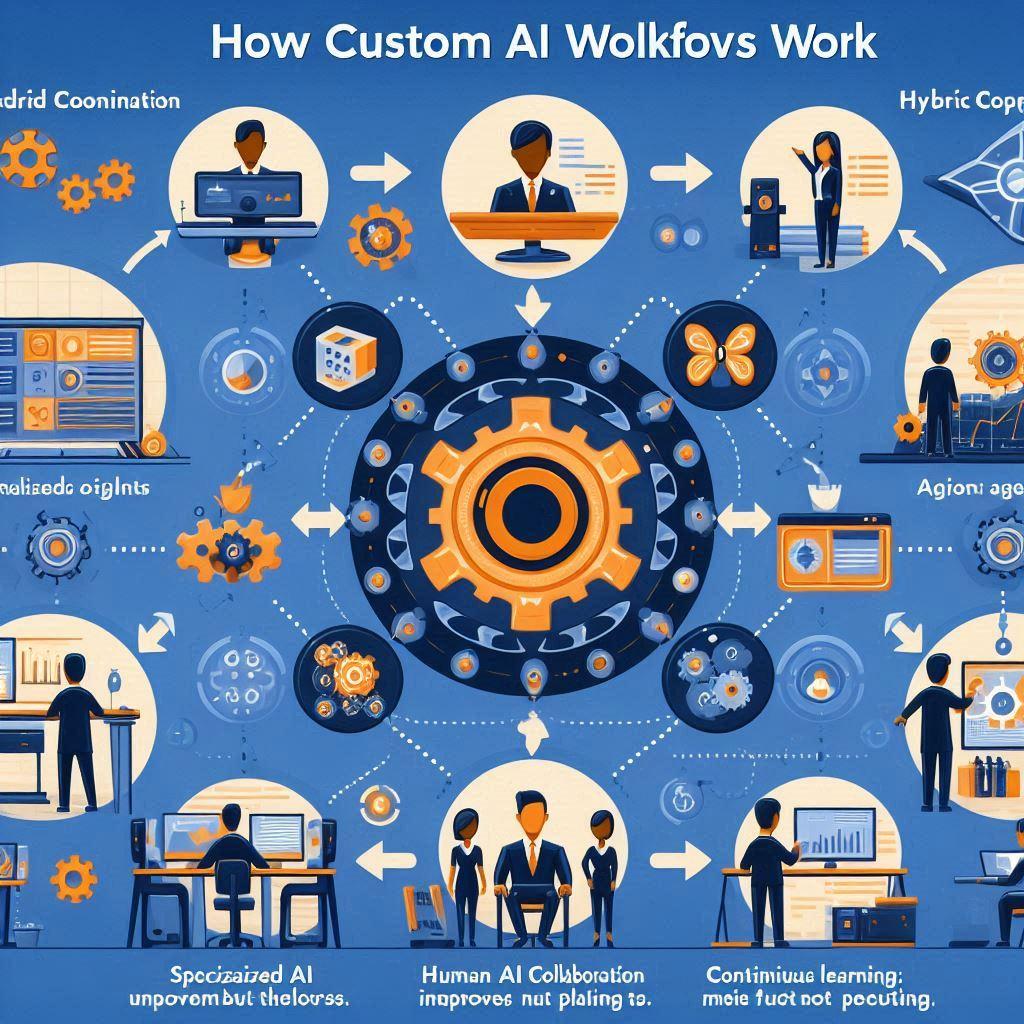Swarm Intelligence: How AI Agents Work Together in Self-Organized and Custom Workflows
Swarm intelligence is all about teamwork, except in this case, it's AI agents working together like a colony of ants or a flock of birds. These smart, independent agents collaborate to complete tasks without needing a boss. This concept is reshaping AI workflows, making them more flexible and efficient. Inspired by books like Swarm Intelligence and Self-Organization in Biological Systems, let's dive into how AI swarms can power everything from automation to content management.
What is Swarm Intelligence?
Swarm intelligence happens when simple agents follow basic rules and create complex, intelligent behaviour. Think about ants finding the shortest path to food or birds flying in perfect formation, no single leader, just teamwork. When AI adopts this approach, it leads to smarter problem-solving, adaptability, and resilience.
Key Features of Swarm Intelligence
- No Central Control: Decisions emerge naturally from interactions.
- Local Communication: Agents share information without needing a global directive.
- Self-Organization: The system evolves and adapts over time.
- Emergent Intelligence: The group is smarter than any individual agent.
- Resilience: The system can keep going even if some agents fail.
Note: AI Elephant Agents should not be used. The focus should remain on AI Ant Agents, which are more decentralized, lightweight, and efficient in dynamic environments.
How AI Swarms Work in Self-Organized Workflows
In a self-organized workflow, AI agents distribute tasks among themselves based on real-time conditions. Since there’s no central authority, they dynamically adjust as needed, just like nature’s swarms.
Real-World Uses of Self-Organized AI Swarms
- Robotics: Drone swarms collaborate on search-and-rescue missions.
- Cybersecurity: AI agents work together to detect and stop cyber threats.
- Traffic Management: AI-powered systems optimize urban traffic in real time.
- Financial Trading: AI bots adapt to market shifts without human input.
- Content Management (CMS): AI assists in organizing, generating, and personalizing content in platforms like Drupal CMS.
Case Study: AI Routing Inspired by Ants
Just like ants use pheromones to find efficient paths, AI swarm agents can manage data traffic by constantly optimizing routes based on real-time network conditions.
Custom-organised AI Workflows
While self-organized AI systems are great, sometimes structure is needed. Custom AI workflows combine swarm intelligence with some level of human oversight or predefined rules.

How Custom AI Workflows Work
- Hybrid Coordination: A high-level AI sets objectives while agents optimize execution.
- Specialized AI Roles: Each agent has a clear role, in improving efficiency.
- Human-AI Collaboration: AI works alongside humans, assisting but not replacing them.
- Continuous Learning: AI agents improve over time through reinforcement learning.
Practical Uses of Custom AI Workflows
- Business Automation: AI streamlines operations like supply chains and customer service.
- Healthcare: AI supports doctors by analyzing medical images.
- AI-Driven Content Creation: AI agents enhance content production at scale.
- Drupal CMS Enhancements: AI-powered automation makes content management smoother, improves SEO, and personalizes user experiences.
The Future of AI Swarm Workflows
Swarm intelligence is already shaping the way AI works, making systems more flexible, scalable, and efficient. As research advances, AI swarms will combine self-organization with structured workflows, unlocking new levels of automation and problem-solving. Businesses using AI-driven collectives can expect better adaptability, smarter decision-making, and more innovation.
Conclusion
Swarm intelligence isn’t just an idea, it’s a practical way to make AI smarter, faster, and more efficient. Whether through fully autonomous swarms or structured AI workflows, this approach is revolutionizing industries from security to content management. The challenge now is to refine AI-human collaboration, ensuring AI agents enhance workflows rather than just automate them. For Drupal CMS and similar platforms, AI-driven workflows could mean a future where content management is seamless, personalized, and constantly improving.



